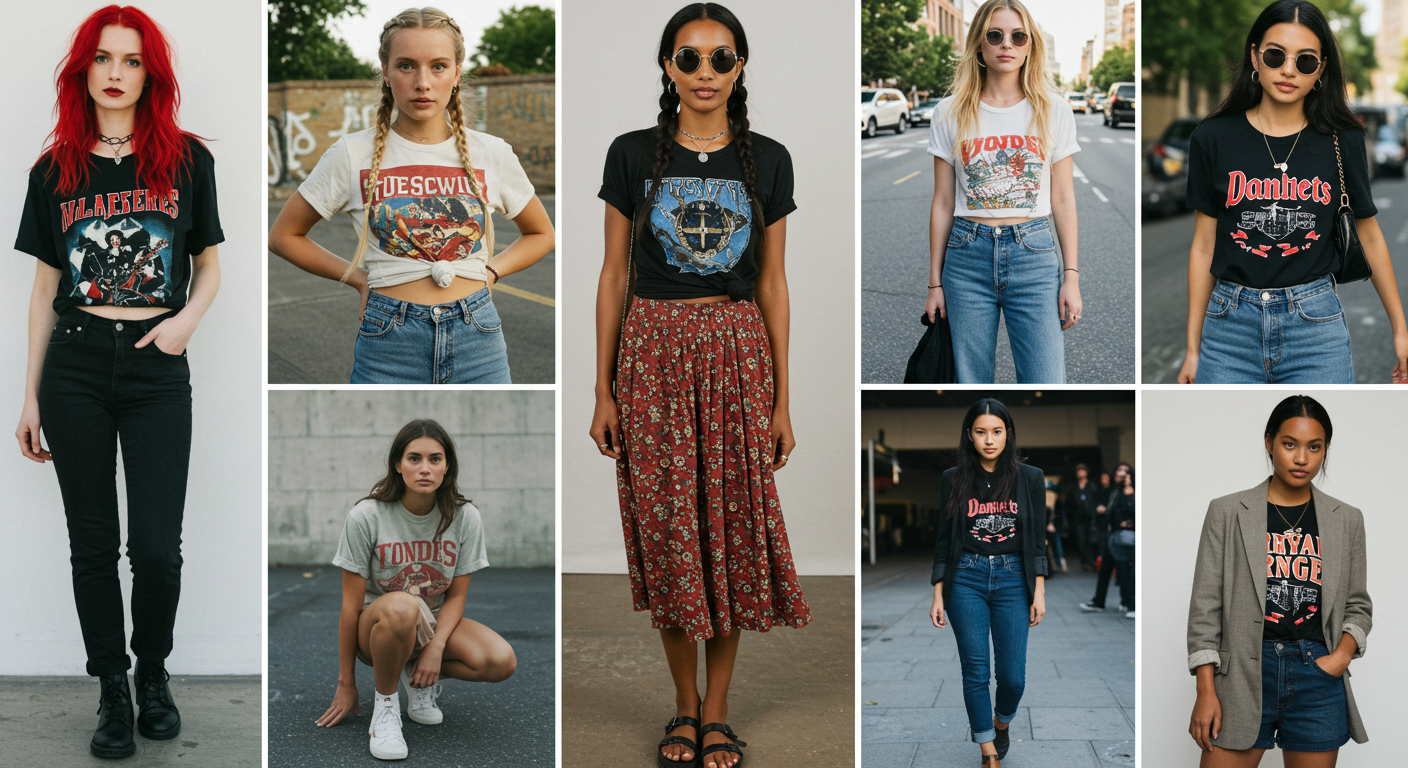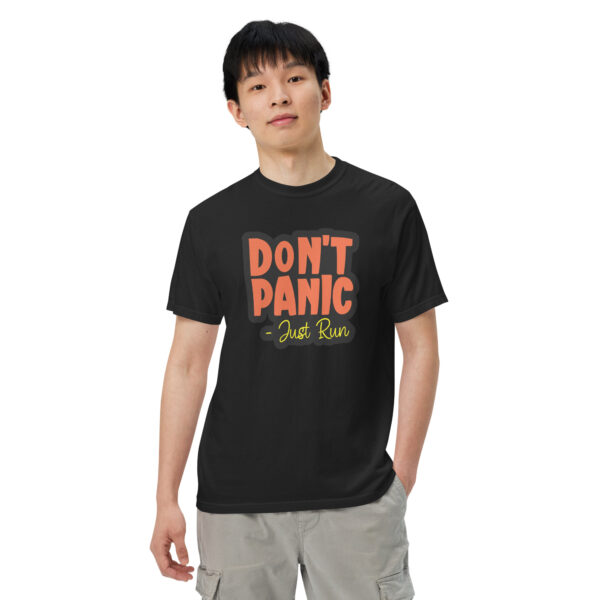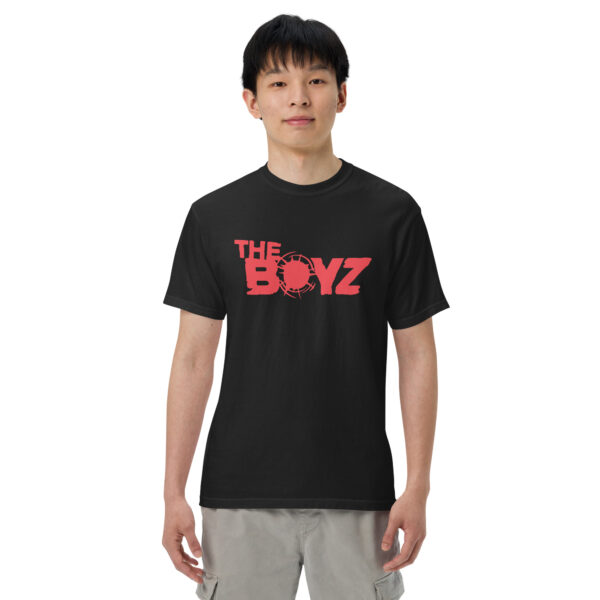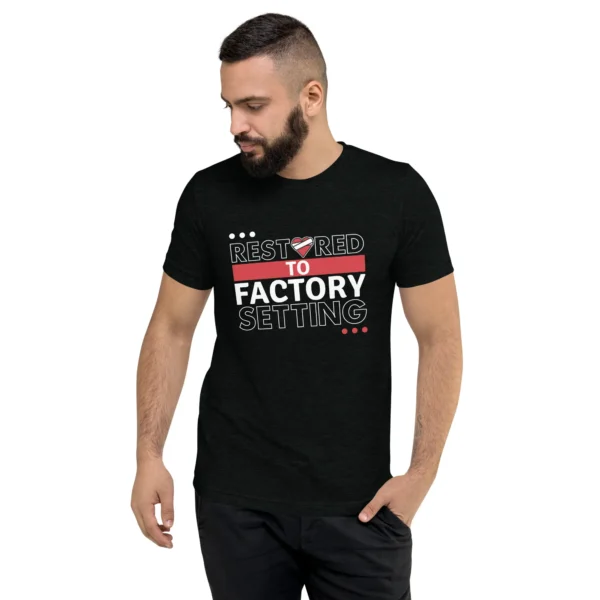Turning a passion for t-shirts into a profitable business is an exciting opportunity that blends creativity with entrepreneurship.
The t-shirt market has steadily risen over the past decade, making it a lucrative choice for those looking to launch an online start-up.
Whether you’re a hobbyist exploring design ideas or an entrepreneur seeking revenue growth, establishing an ecommerce brand requires technical skill and a keen understanding of customer preferences.
With the right approach, even those with minimal design prowess can cash in on this booming industry.
The steps to get started are simple, but success lies in strategy, ensuring your wardrobe of ideas transforms into a thriving business.
Table of Contents
ToggleFive Elements Entrepreneurs Must Consider When Starting An Online T-Shirt Business

Starting an online business requires a clear understanding of the market, and selecting a t-shirt niche through research ensures a competitive edge.
Entrepreneurs should focus on finding a reliable provider for print on demand services, ensuring both quality and efficiency in production.
A well-planned approach to capital thresholds helps gauge financial viability while leveraging ecommerce platforms broadens customer reach.
Elements such as product designs and materials define market positioning, and shaping the business model around these factors enhances profitability.
From experience, balancing creativity with strategic planning makes a significant difference in long-term success.
Is A T-Shirt Business Still Profitable?
When assessing the potential of an online t-shirt business, it’s essential to recognize its enduring demand and the variety of customer segments eager for unique, personalized products.
The US t-shirt market, generating billions in revenue, continues to thrive, fueled by creative designs and the expansion of ecommerce marketplaces and platforms.
Custom t-shirt printing businesses, particularly those leveraging print on demand services, benefit from a growing industry with a significant CAGR.
Consumers increasingly value high-quality t-shirt printing, often seeking unique phrases and graphics that align with their style.
The rise of online shopping has only strengthened this industry, making it an economically viable option for entrepreneurs looking to start a profitable venture.
With personalized products in high demand, a well-executed ecommerce store can tap into this competitive industry effectively.
Required Capital For Launching A T-Shirt Venture

Launching a t-shirt business requires careful budgeting for expenses, including screen printing operations, third-party production resources, and ecommerce platform setup.
Whether handling design creation in-house or outsourcing, understanding financial resource allocation is crucial to maintaining efficiency.
Entrepreneurs opting for a POD business model can minimize upfront investment, as costs are incurred only when a customer order is placed.
Investing wisely in t-shirt materials, printing equipment, and an ecommerce store ensures a seamless operation in this dynamic custom t-shirt business.
A structured approach to expenses enhances success, allowing for steady business growth while keeping financial risks in check.
Allocating Your Time For The Venture
Time allocation plays a vital role in establishing a profitable t-shirt business. Crafting compelling t-shirt design ideas requires staying updated on the latest trends in the t-shirt industry.
They should monitor high-selling brands, and engage with social media platforms such as Instagram Explore and Pinterest boards for inspiration.
Managing an ecommerce website effectively means balancing marketing efforts with product development while also utilizing scheduling assistant software to structure daily tasks.
This level of proper time management helps streamline operations, making it easier to sell t-shirts online and grow a successful online company.
Entrepreneurs who delegate time strategically find themselves better positioned to thrive in a competitive market.
Allocating Financial Resources For The Venture

Smart financial resource allocation is key to sustaining a t-shirt printing business.
Budgeting for t-shirt materials, printing equipment, and an ecommerce platform must be done strategically.
It ensures that every dollar is directed towards essential aspects of business operations.
Marketing plays a crucial role in brand visibility, while an efficient ecommerce solution simplifies transactions and inventory management.
Entrepreneurs with a limited budget can benefit from the print on demand business model, which reduces financial strain while still allowing them to operate within a thriving marketplace.
By leveraging cost-effective strategies, businesses can maintain profitability while adapting to industry demands.
Research The Market
Understanding the competition and consumer demand is key when entering the t-shirt industry.
Market research helps entrepreneurs identify trending t-shirt-related topics, whether it’s vintage designs or humor-infused graphics.
Social media platforms like Instagram, Pinterest, Facebook, and Twitter offer valuable insights into what audiences engage with the most.
Google Trends is a great tool for evaluating the popularity of different products and recognizing market gaps.
Brands that successfully tap into these insights can create a storefront that appeals to a specific niche while positioning their products as a business opportunity.
Assessing the demographics of the target market—including age, style, and buying habits—ensures that marketing efforts resonate with the right audience.
Nail Down A Niche And Target Market

The foundation of a successful t-shirt business lies in defining a niche and pinpointing a target market.
Entrepreneurs can utilize social media polls to gauge consumer interest in a segment before committing to a product line.
Identifying a niche helps differentiate from competition, creating a unique presence in the industry.
Whether catering to men’s t-shirts, women’s t-shirts, or kid’s t-shirts, understanding fabric preferences, styles, and sizes are crucial.
This approach informs branding strategies, aligning products with an audience’s buying habits.
Establishing a clear direction from the start ensures that each product serves a purpose within the broader market while reinforcing the brand’s identity.
Choose A Print On Demand Service
Choosing a reliable print on demand (POD) service provider is a cost-effective way to launch without the burden of maintaining inventory.
This method allows businesses to fulfill customer orders without overproducing, reducing risk while optimizing shipping rates and locations.
Providers specializing in localized production and distribution in different countries ensure faster delivery times and lower carbon emissions.
A high-quality POD supplier should offer various fabrics and fits to accommodate diverse preferences.
Evaluating customer service, sustainability initiatives, and standards is also crucial, as these factors influence long-term growth in a competitive landscape.
Gelato is one example of a POD provider that helps businesses streamline operations with global reach.
Choose Your T-Shirt
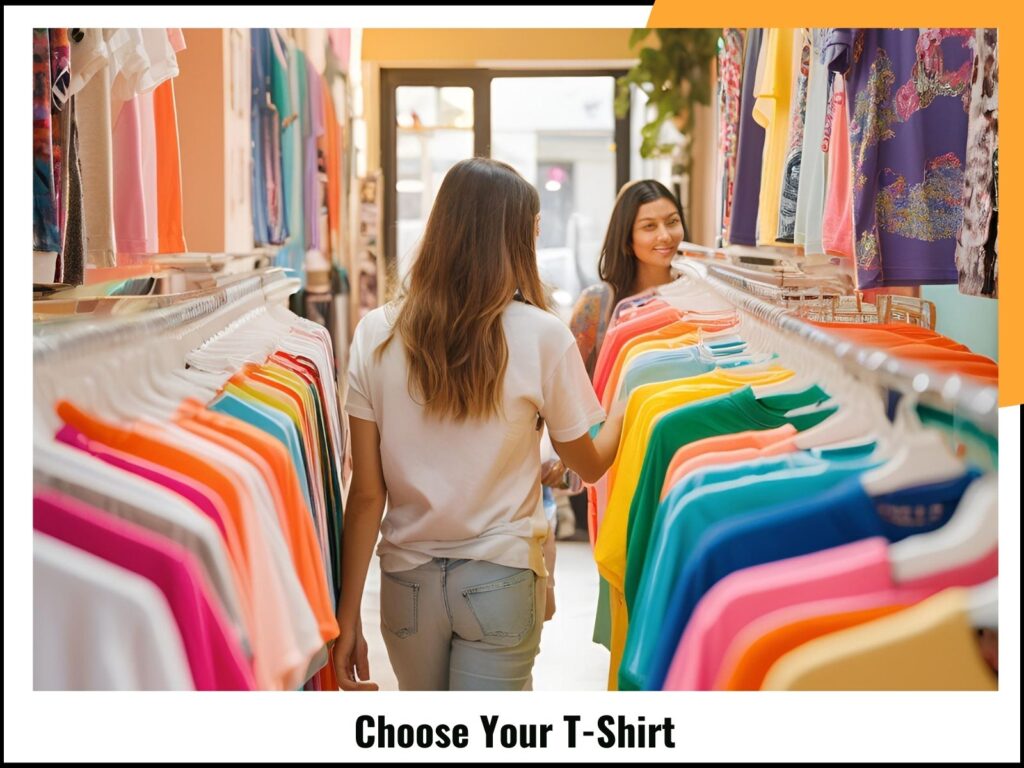
Selecting the right t-shirt is an essential step in the production process. The weight, fabric, fit, and cut determine not just the look but also customer satisfaction.
Manufacturers offer a range of materials that impact quality, and finding a balance between style and comfort enhances brand credibility.
Testing different options from suppliers before launching ensures that the final product aligns with expectations.
A well-crafted t-shirt that meets industry standards encourages repeat purchases and builds a loyal audience.
By taking the time to make informed decisions, businesses can create a product line that stands out in a crowded market.
Shirt Fabric
Selecting the right fabric for your t-shirt business is crucial to offering a product that resonates with your customers.
The type of fabric you choose influences the overall experience of wearing the shirt.
Cotton is well known for its comfort and visual appeal, but it can be prone to wrinkling and shrinking over time.
Organic cotton is a more eco-conscious option, grown without the use of chemical pesticides or fertilizers.
It makes it perfect for non-GMO, environmentally aware customers, although it comes at a premium price point.
Polyester offers excellent durability and moisture-wicking properties, which make it ideal for active wear or warmer weather.
However, it may have a synthetic, clingy feel on the skin, which some people may find uncomfortable.
A cotton/polyester blend offers a balance, with the softness of cotton and the durability of polyester, resulting in a lightweight option that’s less prone to shrinkage.
Different fabrics are suitable for different activities, such as lounging, exercising, or casual wear, so it’s important to select the right type based on your target market’s needs and lifestyle.
Shirt Weight
The weight of the shirt fabric also affects the comfort and suitability of the t-shirt for various conditions.
Lighter-weight shirts, such as those made from polyester, are perfect for warm weather.
Heavier-weight shirts, typically made from cotton, are better suited for colder climates.
When browsing online, terms like “Classic” and “Performance” are often used for lighter-weight shirts.
The “Heavyweight” and “Premium” are used for those with more substantial fabric.
Choosing the right weight ensures that your product meets the needs of customers looking for a t-shirt that suits their environment.
Shirt Fit
Fit is an important factor in how customers perceive the shirt and its suitability for different body types.
There are three primary shirt fits to choose from: relaxed, regular, and slim.
A relaxed fit provides a broader cut across the chest and larger arm holes, creating a baggier, more comfortable look, perfect for those looking for a laid-back fit or engaging in physical activities.
The regular fit offers a straight cut throughout the chest and waist but broadens at the shoulders for a slightly more fitted look that remains comfortable.
On the other hand, the slim fit is a more tailored option, with a narrow cut that tapers from chest to waist, offering a snug, sleek appearance.
These fits allow you to cater to various body types and ensure that your t-shirts serve different purposes, whether they are for lounging, exercising, or casual outings.
Shirt Cut
The cut of the t-shirt, especially the collar type, plays a big role in its overall look. Crewneck t-shirts are a timeless classic, offering a versatile option that suits nearly any occasion.
V-neck shirts, on the other hand, create a more relaxed, casual look and can be dressed up or down depending on the style.
If you’re looking for something unique, a ringer cut may be the way to go.
This cut features contrast color binding at the neck and sleeves, resulting in a two-toned effect that adds extra flair to the design.
As a small business owner, offering a variety of shirt cuts helps differentiate your brand in a competitive market.
Brand should give your customers more options to choose from based on their style preferences.
Validate Your T-Shirt Designs
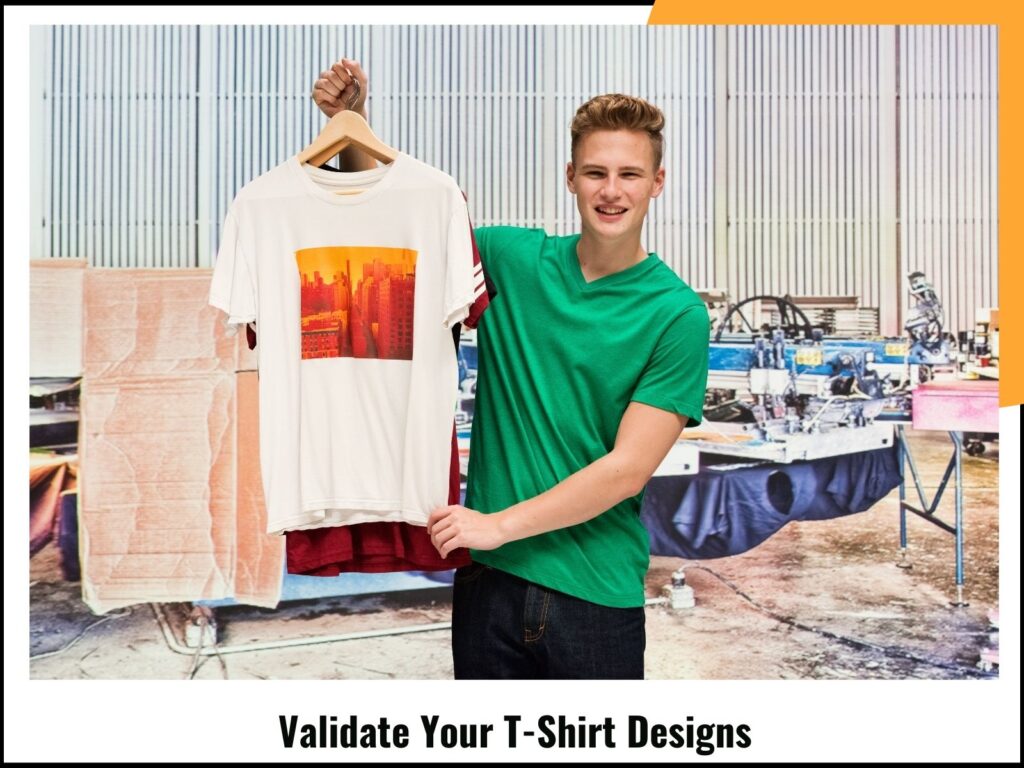
Before diving into your t-shirt business, it’s essential to validate your designs.
Seek feedback from friends, family, or even through social media platforms like Instagram, Pinterest, and TikTok.
Watermarking your digital mock-ups and sharing them on these platforms can help you assess whether your target audience connects with your t-shirt concepts.
To further gauge interest, conduct feedback polls, asking people to approve or disapprove of your designs.
This step not only provides valuable input but also builds excitement for your products.
If the response is positive, you can offer pre-orders to create demand and ensure a steady stream of sales right after your launch.
Choose Your Selling Platform
Choosing the right platform for your online t-shirt business is a key decision. Ecommerce platforms such as Shopify and WooCommerce offer you complete control over your t-shirt business.
It allows you to integrate your preferred sales channels, customize your domain, and optimize your online store.
These platforms also offer technical support, making it easier to manage your business.
Alternatively, marketplaces like Etsy and Amazon provide a ready-made audience, though you may have to pay marketplace fees.
Social media platforms like Instagram and TikTok are also worth considering for direct sales, allowing you to market your designs and engage with followers while building your brand following.
Your choice of platform will influence your sales strategies, from storefront customization to the integration of ecommerce plugins and email marketing tactics.
Set Up Your Online T-Shirt Store

Setting up your online t-shirt store involves more than just uploading products. First, create an account and configure your preferences to match your brand identity.
Use tools like Canva or hire a professional to design your logo, which should reflect your brand’s personality and tie into your t-shirt designs.
Upload high-resolution images of your products and use keyword-driven product descriptions to enhance discoverability on search engines.
Make sure to establish competitive price points that reflect your profit margin, including print-on-demand supplier fees and other business expenses.
Customize your storefront with a memorable name, ensuring your brand stands out.
Integrating ecommerce plugins and necessary tools into your sales channels will simplify the store setup process and make the user experience seamless.
Market Your T-Shirt Business
Marketing is a vital step in the success of your t-shirt business. Social media platforms like Instagram, Pinterest, and TikTok are excellent tools for showcasing your designs and gaining exposure.
Through influencer marketing, you can collaborate with social media users who align with your target audience, sending them product samples for them to share with their followers.
This can significantly increase your brand exposure and drive traffic to your online store. Building and maintaining an email list is equally important.
Offer exclusive deals, promotions, or giveaways to encourage visitors to subscribe to your emails.
This helps you keep your audience engaged with your t-shirt business and informed about new releases and special offers.
Monitor And Optimize Your Store
After launching your online store, it’s crucial to monitor its performance regularly. Use analytics tools like Google Analytics to track key business metrics such as website traffic; bounce rate, and conversion rates.
These insights allow you to optimize your store’s user experience and refine your sales strategies.
Encourage customer feedback and reviews, as they provide valuable data about your products and services.
Regularly reviewing your operations will help you identify areas for improvement, whether it’s product details like fit, fabric, and cut, or optimizing the customer shopping experience through faster shipping or better customer service.
As your business grows, continue to tweak your marketing tactics, adjusting product listings, sale strategies, and even the design of your online storefront to stay competitive.
Five key Factors To Remember When Starting An Online T-Shirt Business

Starting an online t-shirt business requires a strategic approach, especially when it comes to choosing printing methods.
The printing method you select plays a pivotal role in shaping the success of your t-shirt brand.
For those considering bulk orders with simple designs, screen-printing is often the most cost-effective and durable solution.
On the other hand, direct-to-garment printing offers a fantastic option for smaller runs and more intricate, colorful designs, providing a higher level of detail.
Knowing the ins and outs of these printing methods will help you navigate the t-shirt design process efficiently and select the best options to meet your business goals.
Whether you’re selling online or focusing on niche-specific themes, the right choice of printing method can elevate your ecommerce store.
Your T-Shirt Designs
The t-shirt design process is where your creativity and business acumen come into play.
To build a successful brand, the designs you offer must resonate with your target market and align with current fashion trends.
Whether you are leaning towards graphic tees, funny slogans, or other specific themes, your designs should reflect your brand’s identity.
In my experience, staying connected to your audience through platforms like social media helps you better understand what appeals to them.
Utilizing design tools and even hiring professional designers can ensure that your creations stand out.
By offering high-quality, eye-catching designs, you can significantly boost customer attraction and generate repeat business.
Ensuring T-Shirt Quality

Quality is a critical aspect of any t-shirt business. The comfort, durability, and washability of your t-shirts directly affect customer satisfaction.
Selecting the right fabric, stitch, and ensuring high printability can prevent issues with product quality down the line.
In my own experience, the best brands don’t just offer good designs but ensure their product materials meet high standards.
Whether you’re focusing on cotton blends like polycotton or offering organic tees, ensuring quality materials is essential.
When done correctly, these factors create a lasting impression, fostering repeat business and loyalty.
Building Your T-Shirt Brand
Building a robust brand goes beyond creating a logo. It’s about establishing a visual identity and a unique selling proposition that resonates with your audience.
Branding plays a significant role in differentiating your business from competitors and creating an emotional connection with your customers.
Whether it’s the story behind your brand or how you communicate with customers, this element shapes the overall experience.
As you build your t-shirt business, you should also focus on developing a solid online presence.
This means using ecommerce platforms and leveraging social media to connect with your audience and maintain a consistent voice.
Managing Your T-Shirt Inventory
Inventory management is crucial, especially if you’re not using print on demand services.
By keeping track of stock levels, you can avoid both overstocking and running out of items, which could impact sales.
It’s important to utilize tools like inventory forecasting and sales data to make informed decisions about your stock levels.
If you’re just starting out, print on demand models are a great option to minimize risks like dead stock.
It allows you to offer a variety of designs without worrying about excess inventory. This approach ensures you only produce what you sell, leading to more sustainable and efficient business operations.
Build An Online T-Shirt Business Quickly With Gelato
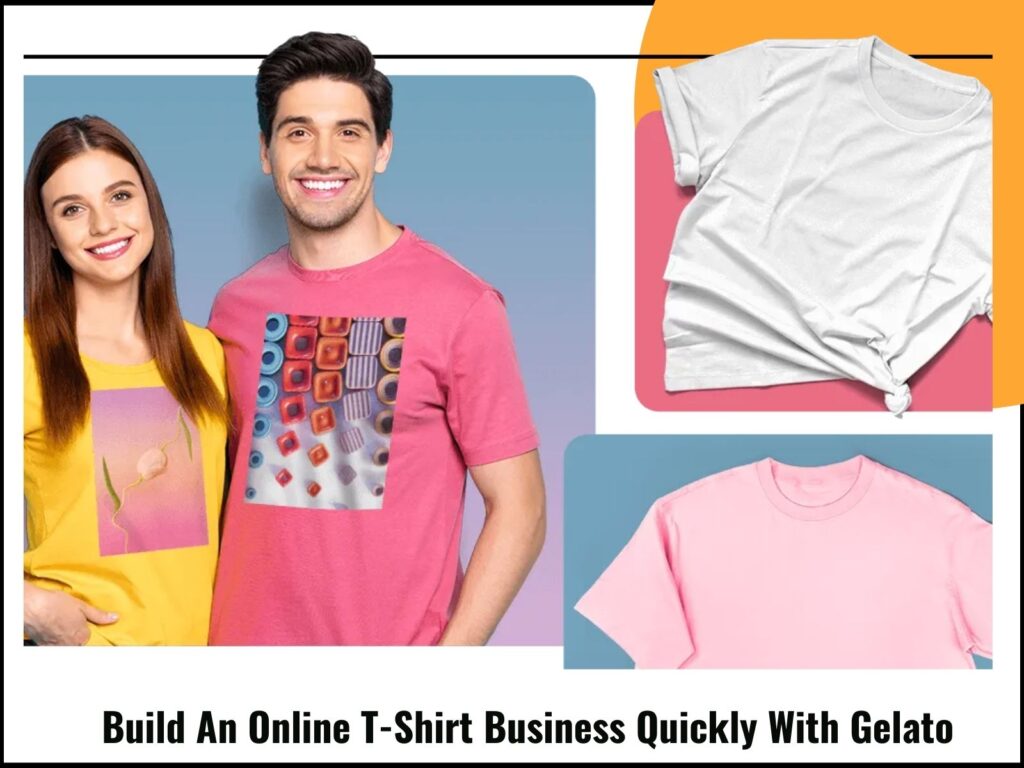
Launching a successful online t-shirt business doesn’t have to be complicated. Services like Gelato can streamline the entire process, from selecting the right niche to setting up your ecommerce storefront.
Gelato’s wide range of customizable t-shirt products makes it easy to cater to different customer preferences.
Whether you’re offering polycotton crewnecks or organic tees, their production capabilities allow you to create a diverse product catalog.
With global delivery in over 30 countries, you can expand your reach while keeping your carbon footprint low.
For those looking to avoid the challenges of traditional manufacturing, print on demand services like Gelato can be a game-changer in launching your profitable business.
Conclusion
Starting a profitable T-shirt business requires careful planning, creativity, and strategic marketing to stand out in a competitive market.
By following these 10 steps—from identifying your niche and designing unique products to setting up an online store and leveraging digital marketing—you can build a strong brand and generate consistent sales.
With dedication, quality designs, and effective promotion, your T-shirt business can grow into a successful and sustainable venture.
FAQs
Q1: What are the best printing methods for starting a t-shirt business?
The best printing methods depend on the design complexity and order size. Screen printing is ideal for bulk orders with simple designs, while direct-to-garment printing is more suited for smaller runs with complex, colorful designs.
Q2: How can I create unique t-shirt designs that appeal to my target market?
Researching current fashion trends on social media and using design tools can help you create unique, eye-catching t-shirt designs. It’s important to align your designs with your brand identity and understand your customers’ preferences.
Q3: What materials should I choose for my t-shirts to ensure high quality?
Look for comfortable, durable fabrics such as high-quality cotton blends or organic tees. The quality of fabric, stitch, and printability are crucial in ensuring customer satisfaction and repeat business.
Q4: How can I build a strong brand for my t-shirt business?
Branding goes beyond a logo. Establish a clear brand voice, a visual identity, and a unique selling proposition. Your brand should resonate emotionally with your customers and reflect your business’s story and values.
Q5: Do I need to manage inventory if I use a print-on-demand model?
No, with print-on-demand services, you only produce items when customers place orders, so there’s no need to manage large amounts of inventory. This reduces the risk of overstocking or dead stock.
Q6: What are the benefits of using a print-on-demand service like Gelato?
Print-on-demand services like Gelato offer convenience, low startup costs, and no need for large inventory management. You can focus on creating designs and marketing while the service handles production, fulfillment, and delivery.
Q7: How can I quickly scale my online t-shirt business?
To scale your business quickly, focus on building a strong online presence, utilizing social media, and offering diverse t-shirt designs. Additionally, using efficient fulfillment services like Gelato can help streamline operations and expand your reach globally.




